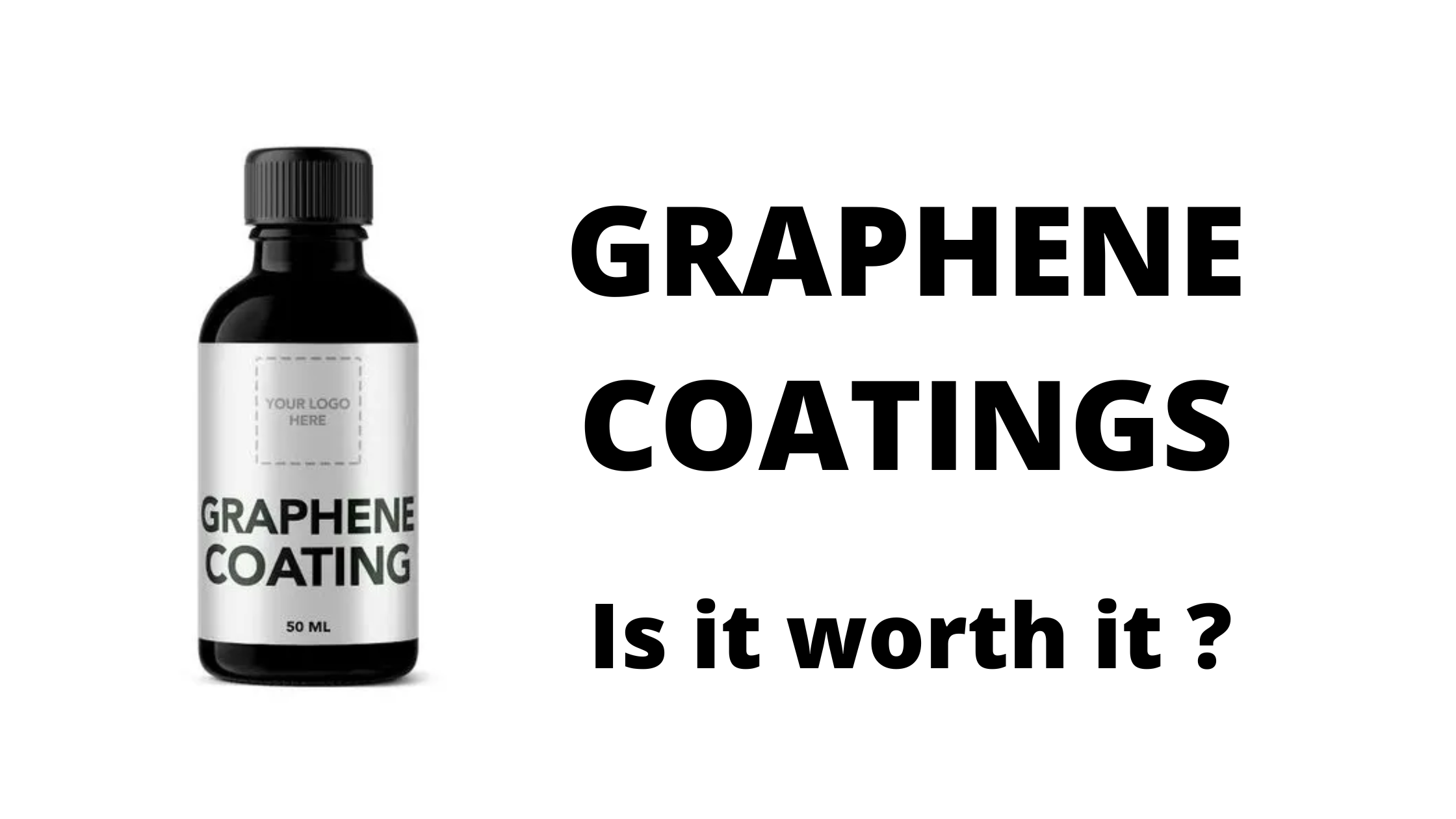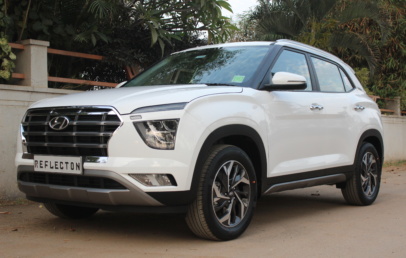
What is Graphene Coating?
Graphene, also known under the name graphite, is a single sheet of graphite. The microscopic surface graphene has an incredibly high surface area and is formed out of many hexagonal rings that or connected to each other.

The total structure is known to be very strong and durable. Under the right circumstances it can retain a flexible property while still resisting large forces. Due to its very tightly packed carbon atoms, it is very stabile and can be used on many different forms.
One of the popular uses is to give strength to materials it is applied to – Carbon fiber can be considered an example of this. As a nano-layer it is small enough to be invisible, and versatile enough to be applied to almost any material/surface.
Due to its predictable surface formation, it can be repaired easily. The self-repairing or self-healing property is mostly thanks to the addition of exposure of carbon-containing molecules, such as hydrocarbons (many waxes, such as paraffin wax are hydrocarbons). This makes it very easy to maintain the coating. Wear and tear could (in theory) be easily solved by applied a hydrocarbon-rich product that allows the nano-structure to heal and correct itself. This property has not yet been tested thoroughly enough in the world of detailing to conclusively say if the adaptations in the automotive industry support this behavior. There is still a risk that the process of turning it into a coating makes it lose certain properties.
Well, Carbon can be found in many shapes depending on its molecular structure. Some well-known forms of carbon can be found in our Graphite or Diamonds. In 2004 Graphene was discovered in the form of powder particles. It is an allotrope of carbon consisting of a single layer of atoms arranged in a two-dimensional honeycomb lattice or a chicken wire structure if you will. This gives Graphene some amazing properties.
While in this structure it is many times stronger than steel, and only a fraction of its weight. It has some flexibility, but if it loses that hexagonal structure it becomes extremely brittle and easily falls apart.
Chicken Mesh/Wire Structure of Graphene Coatings.

Heralded as the ‘Miracle Material’ by both Detailers, Manufacturers and the scientific community, Graphene-Oxide is a ultra light, virtually transparent substance that is supposedly 200 times stronger than steel and serves excellent heat, electricity, conducting capabilities. But is it worth to apply it on a car’s paint? Lets dive a bit deeper into this.
Graphene coatings have taken the automotive industry by storm, introducing a new era of protection and performance. Leveraging the extraordinary properties of graphene, a single layer of carbon atoms, these coatings offer a suite of technical specifications that surpass traditional protection products. In this article, we delve into the technical aspects that make graphene coatings stand out, from its molecular structure to its cutting-edge application methods, and explore how these coatings are redefining car care.
The Molecular Marvel: Graphene
At the core of graphene coatings lies the wonder material itself – graphene. Comprised of a single layer of carbon atoms arranged in a two-dimensional honeycomb lattice, graphene boasts unparalleled attributes that contribute to its exceptional performance as a coating material.
1. Structural Strength: Graphene is incredibly strong, with a tensile strength of over 130 gigapascals, making it more than 100 times stronger than steel. This structural strength forms a robust shield against mechanical damage, protecting the vehicle’s paint from scratches and stone chips.
2. High Thermal and Electrical Conductivity: Graphene exhibits excellent thermal and electrical conductivity. When applied as a coating, this property aids in dissipating heat, preventing the paintwork from overheating under intense sunlight.
3. Hydrophobicity: The hydrophobic nature of graphene creates a water-repellent surface that actively repels water, preventing water spots and promoting self-cleaning properties. Rainwater and contaminants bead up and slide off the surface with ease.
4. Chemical Resistance: Graphene’s chemical inertness grants it impressive resistance to various environmental pollutants, acidic substances, and corrosive agents, preserving the vehicle’s paint from chemical damage.
5. Single-Atom Thickness: Graphene coatings are exceptionally thin, with a single-atom thickness. This ensures a smooth and clear surface, enhancing the paint’s gloss and clarity, creating a captivating visual finish.
Advanced Application Techniques
Applying graphene coatings requires precision and expertise, as well as specialized equipment to achieve optimal results. Professional detailers employ advanced techniques to ensure effective bonding and uniform coverage of the coating.
1. Molecular Bonding: Graphene coatings create a molecular bond with the vehicle’s surface, forming a seamless integration at the atomic level. This bond enhances the coating’s adhesion and longevity.
2. Multi-Layer Application: In some cases, multiple layers of graphene coatings are applied to enhance protection and depth of shine. Each layer enhances the overall performance, providing a cumulative effect.
3. Curing Process: Graphene coatings often require a curing process, which involves allowing the coating to bond and harden to its full potential. This curing period varies depending on the specific product used.
Performance and Longevity
Graphene coatings deliver remarkable performance and longevity, ensuring the vehicle remains protected and looking its best for an extended period.
1. Long-Lasting Protection: Graphene coatings can last for several years with proper maintenance, offering durable protection against environmental elements and UV rays.
2. Scratch and Swirl Resistance: The inherent strength of graphene provides scratch and swirl resistance, minimizing the risk of surface imperfections during maintenance.
3. Easy Maintenance: Graphene coatings’ hydrophobicity facilitates effortless maintenance, as dirt and contaminants are less likely to adhere to the smooth surface, resulting in easier and less frequent cleaning.
Graphene coatings exemplify a marriage of advanced technology and the wonders of graphene, setting new standards in automotive protection and performance. From its molecular structure to advanced application techniques, these coatings harness the full potential of graphene to safeguard the vehicle’s paint and deliver a mesmerizing finish. As the automotive industry embraces this cutting-edge innovation, vehicle owners can expect a transformative experience in car care, where technical excellence and visual brilliance merge seamlessly.
So, Is Graphene better than a Ceramic?
Graphene vs. Ceramic Coating: Unraveling the Superiority of Graphene in Car Care
Introduction
The battle between graphene and ceramic coatings has intensified as car owners seek the best protection for their beloved vehicles. Both materials have their unique advantages, but graphene has emerged as a game-changer in the world of automotive care. In this in-depth comparison, we explore the technical specifications and detailed information that showcase how graphene surpasses ceramic coatings in terms of performance, durability, and overall benefits.
Graphene Coatings: A Molecular Marvel
1. Structural Strength: Graphene’s exceptional tensile strength (over 130 gigapascals) surpasses that of ceramic coatings. Its molecular structure forms an incredibly robust barrier against scratches, stone chips, and minor impacts, protecting the paintwork more effectively.
2. Flexibility and Adaptability: Graphene’s single-atom thickness provides added flexibility, allowing it to conform to the vehicle’s contours seamlessly. This adaptability ensures complete coverage and enhanced protection on all surfaces, including curves and edges.
3. Hydrophobicity and Self-Healing: Graphene’s superior hydrophobic properties result in outstanding water repellency, surpassing traditional ceramic coatings. Moreover, some graphene coatings exhibit self-healing properties, where minor scratches can be mended by heat or sunlight exposure, restoring the surface’s pristine appearance.
4. Thermal Conductivity: Graphene’s high thermal conductivity helps dissipate heat efficiently, preventing excessive heat buildup on the vehicle’s surface. This property is particularly advantageous in warmer climates, where it aids in maintaining a cooler car exterior.
Ceramic Coatings: Traditional Protection
1. Hardness and Scratch Resistance: Ceramic coatings boast impressive hardness and scratch resistance, but they may not match the sheer tensile strength of graphene. While ceramics offer significant protection, they might not withstand certain abrasive impacts as effectively.
2. Hydrophobicity: Ceramic coatings are known for their hydrophobic characteristics, repelling water and promoting self-cleaning properties. However, they may require more frequent maintenance compared to graphene due to differences in their water repellency performance.
3. UV Protection: Both graphene and ceramic coatings provide excellent UV protection, preserving the paint’s color and preventing fading over time. However, graphene’s thermal conductivity contributes to an additional advantage in dissipating heat and reducing potential heat-induced paint damage.
Durability and Longevity
1. Longevity: Graphene coatings generally exhibit prolonged longevity compared to ceramic coatings. Some high-quality graphene products can last for up to 5 years or more with proper maintenance, while ceramic coatings usually last between 2 to 3 years.
2. Scratch Resistance: Both graphene and ceramic coatings offer scratch resistance, but graphene’s superior structural strength grants it an edge in withstanding minor abrasions and swirl marks.
While ceramic coatings have been a popular choice for car owners seeking protection, graphene coatings have risen to the forefront with their molecular marvel and unparalleled technical specifications. From structural strength to hydrophobicity and self-healing properties, graphene outperforms traditional ceramic coatings in several key areas. As car owners seek the ultimate shield for their vehicles, graphene’s cutting-edge technology and long-lasting benefits make it a worthy investment for preserving automotive beauty and ensuring optimal protection.
How to identify a Genuine Coating?
Identifying genuine graphene coatings from fake or inferior products can be challenging, as some manufacturers may make misleading claims about their products. To ensure you are getting a high-quality graphene coating, consider the following factors:
-
Brand Reputation: Choose reputable and well-established brands known for their commitment to quality and customer satisfaction. Look for reviews and testimonials from other customers to gauge their experiences with the product.
-
Product Certifications: Genuine graphene coatings may have certifications or endorsements from reputable third-party testing organizations. Check if the product has been tested and certified by independent laboratories for its properties and performance.
-
Ingredients and Composition: Examine the product’s ingredients list or composition. A genuine graphene coating should clearly state that it contains graphene or graphene oxide. Be cautious of products that do not provide detailed information about their composition.
-
Transparency: Trustworthy manufacturers will be transparent about their product’s technical specifications and will readily provide information about its performance and benefits.
-
Price: High-quality graphene coatings may be more expensive than standard ceramic coatings due to the advanced technology and properties involved. If the price seems too good to be true, it’s essential to be cautious and investigate further.
-
Testimonials and Reviews: Look for customer testimonials and reviews from verified sources. Genuine products are likely to have positive feedback and satisfied customers sharing their experiences.
-
Seller’s Credibility: Purchase from authorized and reputable sellers or directly from the manufacturer’s official website. Be cautious of products sold on unauthorized platforms or from unknown sources.
-
Product Packaging: Check the product’s packaging for any spelling errors, inconsistent branding, or signs of tampering. Genuine products usually have professional and well-designed packaging.
-
Customer Support: Reputable manufacturers will have accessible customer support to answer any questions or concerns you may have about their product.
-
Warranty and Return Policy: Verify if the product comes with a warranty or a clear return policy. Genuine manufacturers stand by the quality of their products and offer warranties to back their claims.
In conclusion, choosing a genuine graphene coating involves research, due diligence, and verifying the product’s credentials. By considering the factors mentioned above and purchasing from reputable sources, you can increase the likelihood of getting a high-quality graphene coating that delivers the promised benefits and protection for your car.
Disclaimer : The content provided on this blog by Torquoholic is intended for informational purposes only. The views and opinions expressed herein are those of the individual authors and do not necessarily reflect the official policy or position of Torquoholic as a whole.
Some content posted on this blog is created by Torquoholic's team, while other content is derived from various sources on the internet, books, discussions, and knowledge sharing by industry professionals. While we strive to ensure the accuracy and reliability of the information provided, we cannot guarantee its completeness or timeliness.
The information presented on this blog is based on our personal research and understanding of the topic at hand. It should not be interpreted as a comprehensive education on the subject matter. Readers are encouraged to conduct their own research and consult with relevant professionals for specific advice or information.
Torquoholic shall not be held liable for any errors, omissions, or inaccuracies in the content provided on this blog, nor for any actions taken in reliance thereon. We disclaim any responsibility for the content of external websites linked to from this blog.
By accessing and using this blog, you agree to indemnify and hold Torquoholic and its authors harmless from any claims, damages, or losses arising from your use of the information provided herein.
Thank you for your understanding and continued support.




